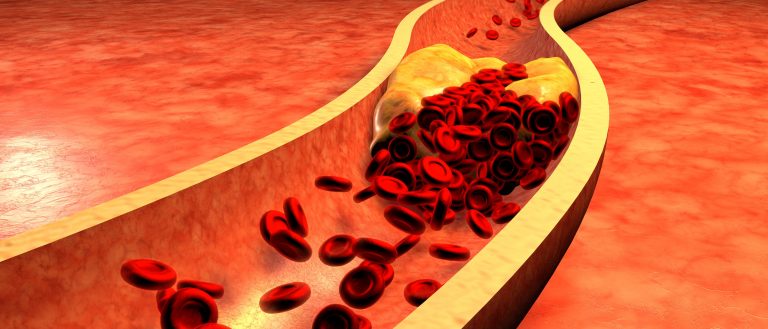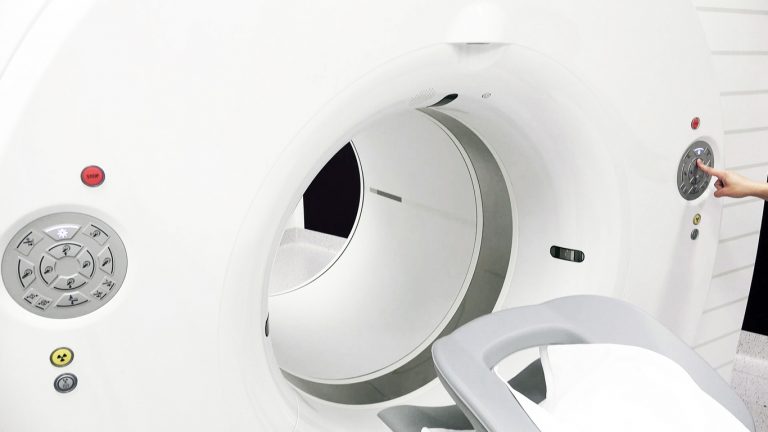Cardiac PET/CT MPI is a non-invasive, high-resolution imaging test that reveals decreased blood flow to the heart through tracers and a special imaging camera.
Healthy heart muscle is able to absorb the tracer, which causes it to look different in images than in an area that did not. The differing colors and degrees of brightness on the scan indicate different levels of heart function. Areas that are damaged or have decreased blood flow receive minimal uptake of the radioactive tracer.
What is Cardiac PET/CT MPI?
Let’s describe what these phrases imply by explaining their respective initialisms and acronyms.
PET – Positron Emission Tomography
CT – Computed Tomography
MPI – Myocardial Perfusion Imaging
PET: Using a radioactive tracer, PET scans demonstrate how organs and tissues work in real-time and can detect cellular changes earlier than CT and MRI scans.
CT: A valuable diagnostic technique that uses a series of x-rays and a computer to generate 3D images of soft tissues and bones to diagnose illness and injury.
PET/CT: When a PET and CT scan are performed simultaneously. This combination test is called a PET/CT scan and produces 3D images for a more accurate diagnosis.
MPI: A non-invasive imaging test revealing how well blood flows through your heart muscle, how efficiently the heart pumps, and areas of the heart that aren’t receiving the blood supply they need.
There are two methods of myocardial perfusion imaging, which are often referred to as nuclear stress tests.
SPECT – Single Photon Emission Computed Tomography
PET – Positron Emission Tomography

Why Cardiac PET/CT?
For years experts have studied the value of PET for coronary artery disease, myocardial perfusion, viability, and ventricular function. ASNC and SNMMI recommended that cardiac PET be the first-line preferred imaging test for diagnosing and managing coronary artery disease because of its improved sensitivity and specificity.
Advantages
High diagnostic accuracy
Low radiation exposure
High-quality images
Short test duration, less than one hour
Decreased retesting due to image clarity
Cardiac PET imaging accommodates high-risk and ill patients and is beneficial for those with a body habitus that would not be suited for SPECT imaging.
When are Cardiac PET/CT Scans Performed?
Many physicians recognize Cardiac PET MPI as the preferred test for diagnosing coronary artery disease and consider it the best choice for identifying patients at risk.
Additional Uses
Patients at risk of major cardiac events
Accurate identification of multi-vessel coronary artery disease
Provides cardiologists with a strong indication of whether or not a patient may benefit from a cardiovascular surgical procedure
Accurate diagnosis to assist in the development of a treatment plan
Monitoring and evaluation of current treatment
Screening for heart disease in symptomatic individuals or those with risk factors

How Do I Prepare for a Cardiac PET/CT Scan?
Specific instructions will be made available to you upon scheduling an appointment. You must follow all preparation guidelines to avoid a rescheduled test. Please tell your doctor about any medical conditions you have, if you’re pregnant or nursing, and the medications you’re taking.
While each physician has their specific instructions, a few standard rules seem to apply when preparing for your cardiac PET scan. Remember to follow your physician’s guidance and the instructions their office provided to you, as the information below serves only as a guideline.
Do not eat or drink anything that has caffeine for 24 hours before your appointment. Do not consume coffee, tea, decaffeinated products, Excedrin®, chocolate, cocoa, herbal teas, or soda. Caffeine will interfere with the results of the test. If you are unsure about a product, please contact your physician’s office.
Do not eat or drink anything except plain water for 4 hours before your appointment. Drink plenty of water before your appointment, as it’s essential to stay hydrated.
Wear a comfortable two-piece outfit the day of your appointment.
Bring all your current medications or a list, both prescribed and over the counter, to your appointment.
It’s best to let your doctor’s office know at least 48 hours before your exam if you cannot make it. Doing so will provide the physician’s office with the needed time to schedule this test for another patient.
There may be specific restrictions on medication and special instructions for individuals with diabetes which will be explained when scheduling your cardiac PET scan.
What to Expect During a Cardiac PET Scan
A PET camera takes pictures of your heart in two stages; a resting and stress phase. A specially trained physician will compare the phases for blood flow assessment through your heart or to look for previous damage to the heart muscle.
Most cardiac PET scans take less than one hour; however, a longer exam should not be cause for concern.
Trained medical personnel will be with you throughout your exam.
Upon arrival, a healthcare professional will review your medical history and explain the testing process. During this time, you will review the medication list or discuss the medications you brought with you to your appointment.
An intravenous line is placed in your arm for the administration of the radiopharmaceutical (Rubidium-82) and the stress pharmaceutical (Regadenoson or Dipyridamole).
Small adhesive pads are placed on your chest to monitor your heart’s electrical activity. Your blood pressure, heart rate, and electrocardiogram are monitored throughout the test.
You will lie flat on a padded table that will move through the scanner. During your cardiac PET scan, the majority of your body is outside the scanner; this is not a full-body scan like an MRI.

The Phases of Your Scan
The test happens in a few phases:
1. Once you are on the scanning table and positioned correctly, a nuclear medicine technologist will take a 60-second image to verify heart placement in the camera field of view.
2. Rubidium-82 is administered over 45 seconds, and then your resting images are taken 2 minutes after the infusion. The resting images take approximately 5 minutes, followed by a 3-7 minute transmission scan.
3. A stress pharmaceutical (Regadenoson or Dipyridamole) is administered, making you feel as though you’ve worked out for 2-3 minutes; the pharmacologic stress agent simulates exercise in your body.
4. Rubidium-82 is administered over 45 seconds, and then your stress images are taken 2 minutes after the infusion. The stress images take approximately 5 minutes, followed by a 3-7 minute transmission scan.
A specially trained physician compares the rest and stress images to evaluate blood flow through your heart, look for heart disease, and damage to the heart.
What to Expect Following a Cardiac PET Scan
Following your exam, you will be able to eat, drink, and return to your normal daily activities unless otherwise instructed by your physician.
Depending on the patient care site, you may have your test results before you leave. Otherwise, your test results are generally ready for your doctor within two business days, and they will review them with you at your follow-up appointment.